
Hatchet throwing
Yes, we’re talking about hurling axes across a room or outdoor area. It’s an arm-burning exercise rooted in Viking and Native American traditions that’s taking modern-day fitness centers by storm. It’s hailed for its ability to strengthen and tone the shoulders, back, arms, and core muscles. Certain gyms, such as Urban Axes Philadelphia, in Pennsylvania, and Gotham Archery in Brooklyn, New York, are dedicating their business to the very sport. You pay an average of $20 for each hour of hacking hatches—that is, after an intense safety course, we hope!
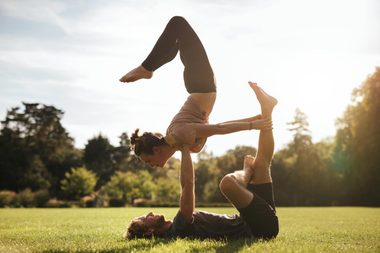
AcroYoga
Calling all Cirque du Soleil fans! This extreme yoga-type exercise involves practicing acrobatic moves and positions with a partner. “It’s an unusual, challenging workout that helps you connect with others and build trust, strength, and flexibility,” says Chris Ryan, C.S.C.S and founder of Chris Ryan Fitness. AcroYoga classes have three main elements: acrobatics practice, healing arts practice, and yogic practice. “During your partner work, you’ll be in groups of three or more, with a base, a flier, and a spotter. You’ll truly feel like you’re flying when you’re up in the air in upward bow pose, balancing on your belly on just your partner’s feet.” Sessions include partner massage, such as Thai massage, and therapeutic flying. In the latter, also called inverted aerial massage, the flier remains passive, while the base uses gravity, stretching and touch to open areas of the flier’s body, Ryan explains.
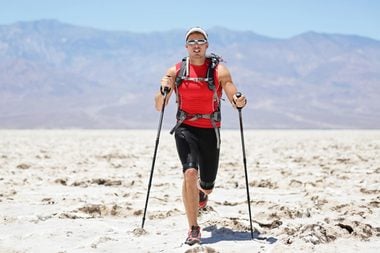
Ultramarathons
Twenty-six miles is extreme enough the 99 percent, but for the over-achievers, ultra marathons offer a new standard of endurance. “An ultramarathon is any distance that is longer than a normal marathon of 26.2 miles,” explains Ryan. “The world’s toughest is known as the Badwater Ultramarathon, which describes itself as ‘the world’s toughest foot race.’ It is a 135-mile (217 km) course starting at 279 feet (85 m) below sea level in Death Valley and ending at an elevation of 8360 feet (2548 m) at the Mount Whitney trailhead.” It takes place annually in mid-July—naturally, when the weather conditions are most extreme and temperatures can reach 130 °F (54 °C). “Very few people—even among ultramarathoners—are capable of finishing this grueling race that tests not only the endurance elite, but the sheer will of mankind,” adds Ryan. Tempted to give it a go? Check out these tips for beginner marathoners.

The caber toss
“If William Wallace (aka Braveheart) were alive today, he would lobby for the caber toss to be an Olympic event,” says Ryan. This traditional Scottish athletic event involves competitors tossing a large tapered pole called a caber, which has been made famous from the Scottish Highland Games. “In Scotland the caber is usually made from a Larch tree and is typically 19-feet 6-inches tall and weighs 175 pounds,” Ryan explains. “The tapered end is held by the tosser with the heavy end towering far above the head; a successful toss is a feat that requires not only brute strength, but balance coordination and speed as they heave the caber end over end in front of them.” The method to the madness? “Lifting odd objects like cabers are much more difficult than dumbbells or barbells, which are designed for safety and easy movement. However, odd object lifting offers a truer test for everyday human performance in the game of life.”
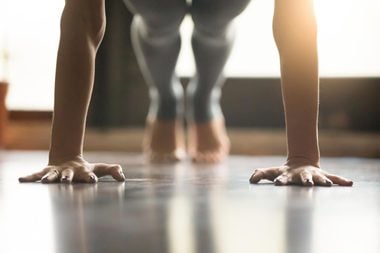
Bodyweight sit-through test
You may have seen this intense bodyweight drill performed on Instagram or Youtube and maybe even thought it didn’t look so tough. Newsflash: It’s way harder than it looks! “The bodyweight sit-through puts the participant down on the ground on all fours and challenges them to control their body through rotation,” explains John Wolfe, owner and founder of Wolf Fitness Systems in California and the Director of Fitness Education at the Onnit Academy in Austin, Texas. “Since most lifestyle and fitness activities do not involve being on the ground in such a way, the sensory feedback that the ground provides can be overwhelming for most people, even very athletic people.” He adds that throwing the 180-degrees of lower body rotation into the mix creates a short and intense workout that will humble most people very quickly.
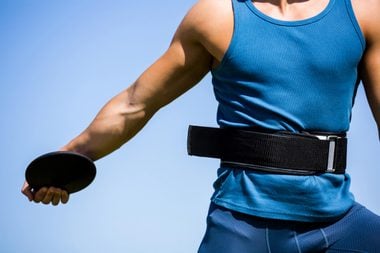
Steel club alternating pullover test
Although steel clubs are a bit of a primitive tool, it has been argued one of the reasons for the evolution of the human hand was to take advantage of swinging, club-like tools and weapons, says Wolfe. While it might seem relatively simple at first glance, actually picking up the club and swinging it with accuracy and proper form is much more difficult than meets the eye. “The steel club pullover is one of the fundamental movements for club swinging and will challenge the participants grip endurance, shoulder strength through a large range of motion and core stability,” he says. “Those that participate in throwing sports, such as discus, would benefit from strengthening the shoulder through a full range of motion will love this drill.”

Racked kettlebell lunge test
While kettlebells have become fairly mainstream in the world of physical fitness, this cannonball-shaped workout tool only recently became introduced to the fitness market. “Only since the early 2000s have people learned to swing the odd shaped device,” says Wolfe. “Although the kettlebell swing might be the best known exercise with this tool, sometimes simple is the best way to go when challenging your fitness level.” The racked kettlebell lunge test is simple, but far from easy. According to Wolfe, the inability to hold the bells in the racked position for the entire test is usually what has people tapping out before time expires. “This happens as a result of the weight of the kettlebells compressing the muscles of the diaphragm,” he explains. “It taxes the shoulders while the legs alternate positions underneath.”

Stiletto workout
Yep—you read that one right! As its name suggests, this workout involves your favorite pair of stilettos—so long as they’re three-inches in height and don’t have a wedge or chunky heel—and are increasingly popular in major U.S. cities like New York and Los Angeles. The exercises are fairly basic, involving kicks, leg lifts, squats, weight training, etc., all while wearing heels. “The workouts are usually dance-driven and focus on balancing and activating the muscles in your calves and buttocks,” says David Greuner, MD, cardiovascular surgeon at NYC Surgical Associates. “In my professional opinion, I would say to be careful of falling and twisting an ankle while engaging in these workouts.” Here’s how to wear high heels without pain, according to podiatrists.

Straight bar handstand
For most people, a headstand is hard enough—then, factor in holding onto a bar while doing one. Known as the straight bar handstand, it stems from gymnastics and is one of the tougher, more challenging moves being performed in gyms today. “It’s basically a push-up on your hands [on a bar or pull-up bar] with your feet in the air,” says Brandon Correa, Urban Fitness League Athlete. “It can be extremely challenging because you’re on a very thin bar, which is quite difficult to get down from (even though you’re only a few inches from the ground).” He also adds that, in order to do this move effectively, you must have enough confidence, strength, and balance so as not to fall.
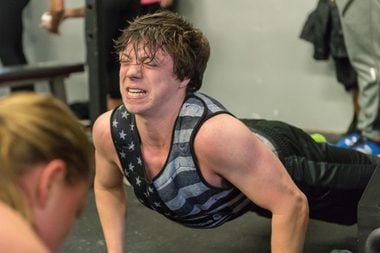
Murph
Quite possibly the most brutal CrossFit workout in existence, “Murph” is one super-intense bootcamp for your cardiovascular system. It involves running one mile, doing 100 pull ups, 200 push ups, and 300 squats and running another mile—all while wearing a 25-lb weighted vest. “Murph likes to make you carry the puke bucket with you on that second mile,” warns Ethan Wolf, co-owner and coach of StrengthRX in Los Angeles. “It’s commonly 60 minutes of straight work, in which someone must find that motivation inside of them to keep going—something I call the ‘red line.'” The red line is the area in which students are approaching their absolute limit without compromising the quality of the movement. “Most people have a hard time doing ten pulls ups, much less 100,” he adds. “Couple that with the high volume of the other exercises, along with the weight vest, and you have level intensity that is rarely matched.”
